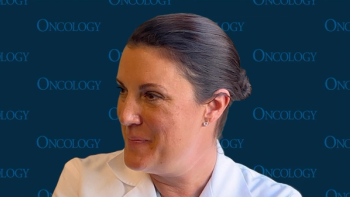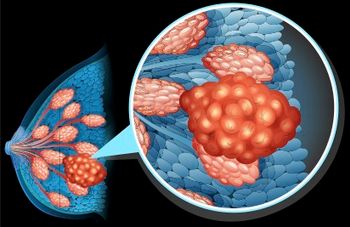
Aggressive Breast Cancer Treatment Increased Amount of Missed Work
Selection of more aggressive treatment options for breast cancer led to substantial employment disruptions among working patients, according to the results of a recent study.
Selection of more aggressive treatment options for breast cancer led to substantial employment disruptions among working patients, according to the results of a study
“Our results show that treatment has a profound effect on returning to work in the modern era despite improvements in symptom control and changes in social policy,” wrote Reshma Jagsi, MD, DPhil, of the University of Michigan, and colleagues. “In addition to policies that further improve employment support, practical actions by clinicians to reduce the overuse of aggressive treatments are of critical importance.”
The researchers surveyed a large group of women aged 20 to 79 diagnosed with stage 0–II breast cancer reported to the Georgia and Los Angeles Surveillance, Epidemiology, and End Results (SEER) registries in 2014–2015. Of eligible women, 2,502 responded and 1,006 reported working prior to their cancer diagnosis.
Treatment varied among the cohort, with most patients (62%) undergoing lumpectomy. A smaller percentage of patients (16%) underwent unilateral mastectomy, and about one-quarter of patients underwent bilateral mastectomy (23%). One-third of patients received chemotherapy.
Eighty-four percent of patients reported working full-time before they were diagnosed with cancer, but only one-half had jobs that allowed for paid sick leave. Thirty-nine percent of patients had disability benefits, and 38% had a flexible work schedule.
The researchers identified several factors associated with missing at least 1 month of work or stopping work altogether compared with missing up to 30 days. Patients who underwent chemotherapy were more likely to stop work (odds ratio [OR] for missing more than 1 month, 1.3; OR for stopping work, 3.9). In addition, surgical treatment was associated with missing more than 1 month of work (OR for bilateral mastectomy with reconstruction vs lumpectomy, 7.8) and with stopping work altogether (OR for bilateral mastectomy with reconstruction vs lumpectomy, 3.1).
“These findings are important because never before have women with breast cancer faced such a wide range of choices for surgical management, nor has the dichotomy in surgical treatment options been more dramatic,” the researchers wrote. “Some women receive breast conservation, whereas others receive bilateral mastectomy for exactly the same condition, often also with reconstruction. Understanding the employment effects of different surgical decisions is critically important to the many patients who consider surgical treatments more aggressive than medically necessary to treat their cancer.”
Race was also significantly associated with missing work (P = .01). Compared with whites, blacks were twice as likely to miss more than 1 month of work (OR, 2.0), and almost twice as likely to stop working altogether (OR, 1.7). Those patients with paid sick leave were less likely to stop working (OR, 0.5) as were those with flexible schedules (OR, 0.3).
“The current data allow quantification of the financial impact of this missed work, and these data may be very useful in helping patients understand the full impact of treatment decisions,” the researchers wrote.
Newsletter
Stay up to date on recent advances in the multidisciplinary approach to cancer.


















































































